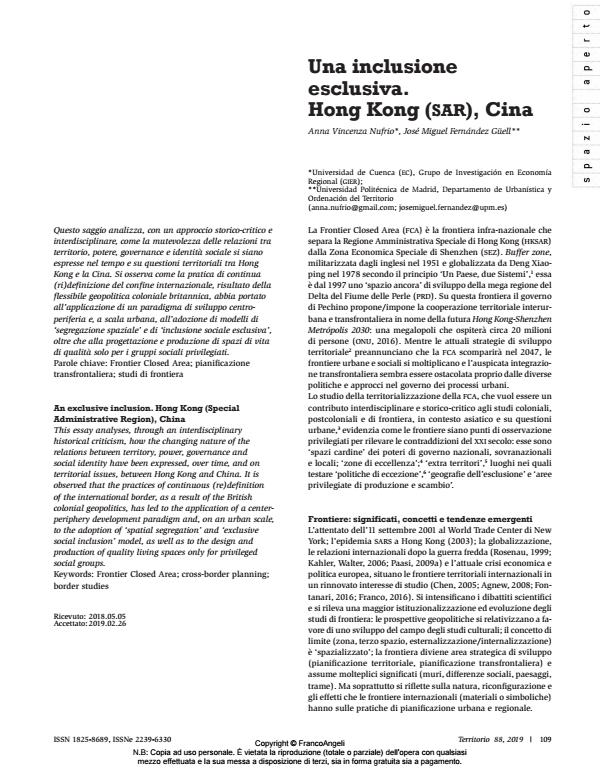An exclusive inclusion. Hong Kong (Special Administrative Region), China
Journal title TERRITORIO
Author/s Anna Vincenza Nufrio, José Miguel Fernández Güell
Publishing Year 2019 Issue 2019/88
Language Italian Pages 11 P. 109-119 File size 2519 KB
DOI 10.3280/TR2019-088017
DOI is like a bar code for intellectual property: to have more infomation
click here
Below, you can see the article first page
If you want to buy this article in PDF format, you can do it, following the instructions to buy download credits

FrancoAngeli is member of Publishers International Linking Association, Inc (PILA), a not-for-profit association which run the CrossRef service enabling links to and from online scholarly content.
This essay analyses, through an interdisciplinary historical criticism, how the changing nature of the relations between territory, power, governance and social identity have been expressed, over time, and on territorial issues, between Hong Kong and China. It is observed that the practices of continuous (re)definition of the international border, as a result of the British colonial geopolitics, has led to the application of a centerperiphery development paradigm and, on an urban scale, to the adoption of ‘spatial segregation’ and ‘exclusive social inclusion’ model, as well as to the design and production of quality living spaces only for privileged social groups.
Keywords: Frontier Closed Area; cross-border planning; border studies
Anna Vincenza Nufrio, José Miguel Fernández Güell, Una inclusione esclusiva. Hong Kong (sar), Cina in "TERRITORIO" 88/2019, pp 109-119, DOI: 10.3280/TR2019-088017